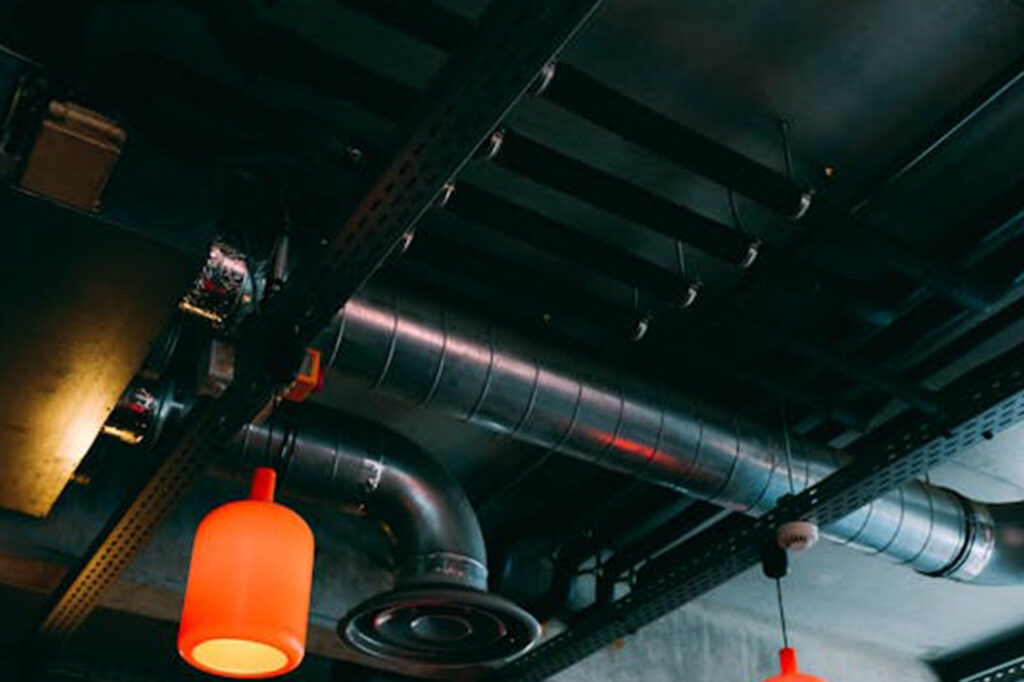Metal barns can be designed to serve various purposes. These structures can easily be upgraded to meet evolving needs. Adding specific features can significantly enhance a metal barn’s utility, comfort, and long-term value. From improving storage and workflow to accommodating livestock and hobby spaces, popular add-ons can transform a simple structure into a multifunctional asset.
In this blog, we shall talk about the different types of add-ons for your metal barn that are quite popular today, brought to you by the experts at Lion Barns.
Insulation for Comfort and Efficiency
Adding insulation to a metal barn plays a crucial role in maintaining a consistent indoor temperature. This upgrade becomes especially valuable when the barn is used for livestock housing, storage of temperature-sensitive items, or workshop space. Insulation helps reduce condensation, preventing moisture buildup that can lead to mold and rust. It also creates a more comfortable environment during both summer and winter months. Choosing the right type of insulation, such as fiberglass, foam boards, or spray foam, depends on the barn’s intended use and regional climate.
Windows and Skylights for Natural Light
Natural light enhances the interior environment of any building. Installing windows or skylights in a metal barn can reduce the need for artificial lighting during the daytime. Well-placed windows also improve ventilation, helping to regulate indoor air quality. For barns used as workspaces or for animal shelter, this increased access to light and fresh air can be a major advantage. Skylights on the roof and strategically placed windows along the walls provide not only functionality but also aesthetic appeal.
Ventilation Systems for Air Quality
Proper ventilation is essential in a metal barn, especially if it is used to house animals or store materials that emit odors or fumes. Options range from simple ridge vents to more sophisticated mechanical ventilation systems. A good ventilation system maintains airflow, controls humidity, and removes contaminants from the air. This prevents respiratory problems for animals and promotes a healthier space for people working in the barn. Effective ventilation contributes to the longevity of the structure and the well-being of its occupants.
Lofts and Mezzanines for Extra Storage
One effective way to maximize vertical space in a metal barn is by adding a loft or mezzanine. These upper-level platforms can be used to store feed, equipment, or seasonal items, keeping them off the ground and out of the way. Lofts can also serve as additional workspace or even living quarters, depending on the barn’s purpose. Adding a loft is a smart way to increase the barn’s functionality without expanding its footprint.
Partitions and Interior Walls for Organization
Customizing the interior layout of a metal barn with partitions or interior walls helps create designated zones for different activities. These sections can separate storage from animal areas or create private workspaces within a shared building. Interior customization offers flexibility in how the barn is used over time. As needs change, walls can be added, removed, or repositioned to accommodate new uses, making the barn a more adaptable and efficient space.
Electrical Wiring and Lighting for Modern Convenience
Installing electrical wiring in a metal barn opens the door to a wide range of functionalities. Lighting, outlets, heating units, and power tools all become accessible with a proper electrical setup. Choosing energy-efficient lighting such as LED fixtures enhances visibility and reduces energy costs. Proper lighting improves safety during early morning or late evening work. In barns converted to hobby shops or garages, reliable electrical access becomes essential for productivity.
Plumbing and Water Access for Livestock and Cleaning
Water access is vital for barns used for livestock, gardening, or cleaning purposes. Adding plumbing allows for sinks, water troughs, and wash stations to be installed. This feature makes daily chores more efficient and improves sanitation. Water access is especially important in barns that double as workshops or are used for processing agricultural goods. Having running water nearby reduces the need to transport it from distant sources and enhances overall functionality.
Climate Control Features for Year-Round Use
Climate control systems such as heating units, air conditioning, or dehumidifiers allow a metal barn to function year-round. These systems are crucial for barns used as offices, studios, or storage for sensitive items. Climate control enhances comfort and protects both occupants and stored goods from extreme temperatures. Options for climate control vary depending on the barn’s size and usage but all contribute to a more habitable and effective environment.
Exterior Overhangs and Covered Areas for Versatility
Adding an exterior overhang or a covered porch area extends the barn’s usable space and provides shelter for animals, tools, or vehicles. These extensions can serve as shaded workspaces during hot days or dry zones during rain. Covered outdoor areas are ideal for prepping equipment, feeding animals, or simply relaxing. Enhancing the barn’s exterior with such features increases its versatility and visual appeal.
Security Enhancements for Peace of Mind
Security is an important consideration for any property. Installing features such as lockable doors, motion-sensor lighting, and surveillance cameras helps protect valuable items stored inside the barn. These enhancements discourage unauthorized access and give owners greater peace of mind. Security features are especially important when the barn stores expensive tools, machinery, or livestock. A secure barn is a smart barn, both for safety and insurance purposes.
Customized Doors for Accessibility and Function
Choosing the right doors can dramatically improve the barn’s usability. Large roll-up or sliding doors accommodate vehicles and equipment, while smaller pedestrian doors provide convenient entry and exit. Doors with windows offer added light and visibility. Tailoring the type and number of doors to the barn’s intended purpose ensures ease of use and better workflow. Well-designed access points enhance both function and aesthetics.
Flooring Upgrades for Durability and Safety
Upgrading the floor of a metal barn contributes to its usability and safety. Concrete flooring is ideal for heavy-duty use, while rubber mats offer comfort in animal stalls or work areas. Flooring materials can be selected to reduce slips, absorb shock, or resist moisture. Proper flooring enhances sanitation and prolongs the life of the barn. It also contributes to the health and safety of both animals and humans.
Paint and Siding Finishes for Protection and Style
Applying protective paint or siding to a metal barn not only boosts its appearance but also adds a layer of defense against the elements. Special coatings can reflect sunlight, resist rust, and increase the building’s lifespan. Choosing colors and finishes that match other buildings on the property creates a unified look. Regular maintenance of the exterior finish preserves the barn’s structure and value.
Gutters and Drainage Systems for Water Management
Effective water management is essential for maintaining the integrity of a metal barn. Installing gutters and downspouts channels rainwater away from the foundation, preventing erosion and structural damage. Proper drainage protects the building and surrounding property. A good drainage system also reduces standing water, which can become a breeding ground for pests. Managing water flow ensures a safer and more durable barn.
Solar Panels for Energy Efficiency
Integrating solar panels into a metal barn’s design provides a renewable energy source that reduces utility costs. Solar panels can power lights, fans, and tools, making the barn more self-sufficient. This sustainable option is especially useful in remote areas where grid access is limited. Investing in solar technology contributes to long-term energy savings and supports environmentally conscious living.
Rainwater Harvesting for Sustainability
Collecting and storing rainwater is an eco-friendly way to meet water needs in and around a metal barn. Harvested water can be used for irrigation, cleaning, or even livestock watering, depending on filtration. This system reduces dependence on municipal or well water and promotes sustainability. A rainwater harvesting system can be as simple or complex as needed, making it a flexible and practical add-on.
Interior Finishing for Specialized Use
Interior finishes such as drywall, paneling, or even tile can transform a basic metal barn into a refined space for offices, studios, or event venues. Finishing the interior allows for better insulation, noise control, and aesthetic value. This upgrade makes the barn more inviting and suitable for a broader range of activities. A well-finished interior turns a utilitarian structure into a comfortable and attractive place.
Technology Integration for Smart Management
Modern technology can be incorporated into a metal barn to improve convenience and efficiency. Automated lighting, climate control, and security systems can all be managed remotely. Smart devices such as sensors for temperature, humidity, or motion help monitor conditions in real time. Technology integration supports better decision-making and enhances the overall user experience. This digital upgrade turns a traditional barn into a smart facility.
Conclusion
Adding custom features to a metal barn increases its utility, comfort, and value. From basic upgrades like insulation and lighting to advanced features such as smart technology and solar power, there are countless ways to personalize a metal barn. Each addition serves a purpose, whether it is improving daily function, ensuring animal welfare, or enhancing aesthetic appeal. These thoughtful upgrades transform a standard barn into a tailored solution that meets both current and future needs.

